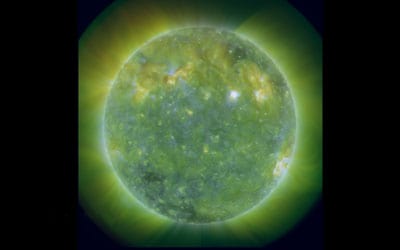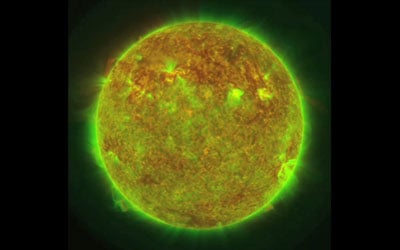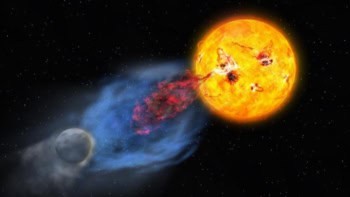
The first high-resolution images of the Sun have been returned from NASA’s Solar Dynamics Observatory (SDO), which was launched in February.
The $850m mission will investigate the causes of solar variability and how this creates a weather system in space. It is the first mission in NASA’s “Living With a Star” programme, which was established in 2001 to try and obtain a better understanding of how the Sun’s activity can impact on life on Earth.
These first images reveal a dynamic landscape, showing the Sun’s surface in the highest resolution to date. The images reveal clouds of charged particles streaming from prominences on the Sun’s surface in events known as coronal mass ejections. They also show solar flares, which are bright X-ray bursts caused by energetic explosions in active regions of the Sun.
“These initial images show a dynamic Sun that I had never seen in more than 40 years of solar research,” says Richard Fisher, director of the Heliophysics Division at NASA headquarters in Washington, DC. “This mission will have a huge impact on science, similar to the impact of the Hubble Space Telescope on modern astrophysics.”
Magnetic mayhem
The cause of the Sun’s volatility is connected to its magnetic activity, which is known to vary over a cycle of approximately 11 years. Greater magnetic activity leads to more “sunspots”, or darker patches visible on the solar surface. These sunspots are regions where the magnetic-field lines have become twisted because of differential rotation in the outer layers of the Sun.
Particularly violent sunspots can lead to coronal mass ejections from the solar surface, and some of these particles can reach the Van Allen radiation belt – the outer region of Earth’s own magnetic field – where they are accelerated to approaching the speed of light. During solar maxima, when sunspot numbers are at their peak, the abundance of particles shooting around in the radiation belt can become a real hazard to the satellites that are positioned there.
The SDO mission comes at a particularly interesting time for solar physics. We were expecting to reach the next solar maxima in around 2011–2012, but space-weather experts have been surprised over the past few years to report few signs that the number of sunspots has been increasing since the last solar minimum in 2006. This has prompted some space scientists to forecast that we are heading towards another prolonged spell of quiet sunspot activity, the last of which was observed between 1645 and 1715 in a period called the “Maunder minimum”.
Three instruments in one
The SDO will initially operate for five years with the option to extend this for a further five years after that. “It will observe the Sun faster, deeper and in greater detail than any previous observatory,” says astrophysicist Madhulika Guhathakurta, the mission’s programme scientist.
The SDO craft sits in a geosynchronous orbit, which enables it to continuously observe the Sun and makes it easier to transmit data to a ground-based station. It carries three sensitive instruments for viewing the Sun.
One instrument is the Atmospheric Imaging Assembly (AIA), an array of four telescopes that will observe the surface and atmosphere of the Sun over 10 different wavelength bands. Another is the Extreme Ultraviolet Variability Experiment (EVE), which will track the powerful outbursts that can affect the Earth’s upper atmosphere. Finally, there is the Helioseismic and Magnetic Imager (HMI), which will map solar magnetic fields and peer beneath the Sun’s opaque surface to study the magnetic dynamo.
All images courtesy of NASA/Goddard Space Flight Center Scientific Visualization Studio








